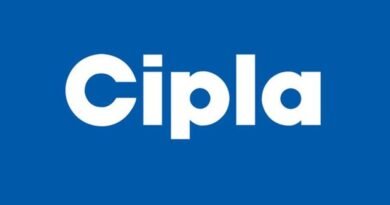Asian equities mostly rise as dealers eye slowing infection rate
Hong Kong, Apr 9 (AFP) Asian markets were mostly in positive territory Thursday following another strong day for Wall Street as traders buy into optimism that the coronavirus crisis could be nearing its apex, while crude extended gains on hopes top producers will agree to a massive output cut.
Despite news that thousands more people had died of COVID-19 around the world, the slowing rate of news infections is providing some much-needed buoyancy to equities as investors eye an easing of lockdown restrictions that have strangled the global economy.
Meanwhile, lawmakers in Washington are discussing further possible stimulus measures of around 500 billion for struggling US firms, with Republicans and Democrats looking to work together in a rare sign of unity.
While nearly 2,000 Americans died of the disease Wednesday, Donald Trump adviser Anthony Fauci said there could be a turnaround in the battle as soon as next week.
Citing a slowdown in hospitalisations owing to stay-at-home orders, Andrew Cuomo, governor of US hotspot New York state, told reporters: “We are flattening the curve.” That optimism was shared by Trump, who said the US was “hopefully heading towards a final stretch, the light at the end of the tunnel”.
Vice President Mike Pence added: “We’re beginning to see glimmers of hope.” The upbeat tone sent all three main indexes on Wall Street surging and the gains extended into Asia again.
Hong Kong, Seoul and Singapore added more than one percent and Sydney almost two percent. Shanghai gained 0.5 percent, Taipei added 0.2 percent but there were small losses in Tokyo and Jakarta.
“Signs that the number of new daily coronavirus cases is plateauing is driving expectations that social distancing measures will be lifted soon in parts of the world,” said Stephen Innes or AxiCorp. “Indeed, relaxing social distancing in the new ‘risk-on’ barometer.” “Pretty much everywhere you look in financial markets there is renewed optimism.”
However, while the Vix “fear index” has halved from its levels seen in mid-March there was still caution among observers with health experts stressing that any premature loosening of restrictions could accelerate the spread of the pandemic.
And the economic toll of the crisis is becoming apparent, with France now in recession after suffering its worst contraction since 1945, while European powerhouse Germany is expected to shrink by a tenth in the second quarter of the year.
Despite this, EU leaders are still struggling to agree a bailout plan to support the region, with a major sticking point being so-called “coronabonds” that would pool debt among nations.
Thursday is building up to be a crucial day for investors, with new unemployment benefits claims due to be released, with a whopping 10 million being clocked up in the previous two weeks.
Then there is the much-anticipated teleconference between OPEC and other major oil producers, which comes as oil wallows at near-two decade lows with Russia and Saudi Arabia’s price war compounding slack demand caused by the virus.
Russia gave cause for hope Wednesday when it said it is willing to cut output by about 1.6 million barrels a day, or about 15 percent.
A key question had been whether the US would join any deal, but analysts say a fall in its crude output forecast released earlier this week is likely enough to satisfy Riyadh and Moscow for now. That is followed Friday by talks between G20 energy ministers.
Still, analysts caution that the devil will be in the detail, and an output cut deemed too small could send prices down even further.
A cut of just 10 million barrels a day “might not trigger much of a rally and probably eventually see selling pressure drive crude back to the low-mid 20s,” said Edward Moya, senior market analyst with OANDA.
He also cautioned that a “turn for the worse could happen” which derails a deal, adding that “the following 24 hours will be critical for global oil prices”.




